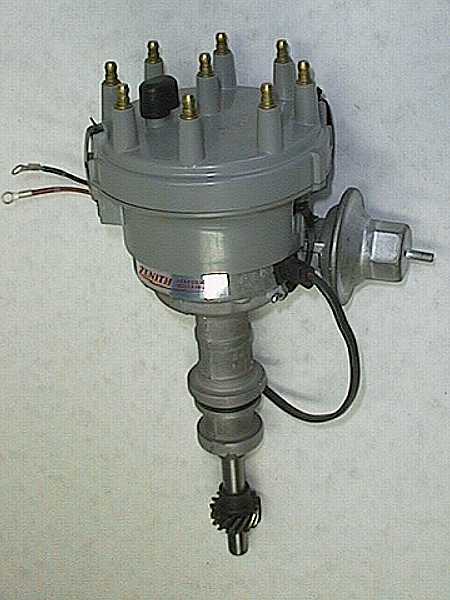ari666
250,000 hits
- Joined
- Mar 10, 2009
- Messages
- 11,835
- Reaction score
- 128
- Points
- 63
- Location
- melbourne
- Members Ride
- 1966 impala, R32 GTR
the vacuum advance hose is connected to the ... umm... the shiny thing attached to the dizzy?! gah! this is the only pic i could find sorta close. im pretty sure its a ford, but anyway, look at the shiny cylinder thingie on the side of it, pointed to the right? thats the vacuum advance module. when it gets vacuum (part throttle or deceleration) it advances the timing by pulling the internal trigger mechanism. now i dont know why i wrote that cos' it has nothing to do with what you want to do, so moving on:

take the vacuum hose off that shiny thing (yours prolly wont be shiny anymore) and plug the hose up with a bolt or screwdriver or something.
now do a final check of everything, make sure wires are not tangled up in stuff and will catch fire of get caught in anything and start the engine.
once its running, pick up the test light, stick you head in as close to where you made your timing marks and pull the trigger. the light will flash each time that 1 spark plug fires. what you want is your two little marks (0 on the timing cover, and the new line you drew on the balancer) to line up each time the light flashes. if it doesnt you need to turn the dizzy ever-so-slightly, anti clockwise will make the mark move backwards(advancing), clockwise will make it move forwards(retarding) once its lined up where you want it, tighten up the 14mm bolt on the dizzy RECHECK!!! its easy to knock the dizzy while doing up the bolt so make sure you recheck it after its tight. take off all your leads and put your vacuum hose back on the vac advnce module and take it for a bit of a drive

take the vacuum hose off that shiny thing (yours prolly wont be shiny anymore) and plug the hose up with a bolt or screwdriver or something.
now do a final check of everything, make sure wires are not tangled up in stuff and will catch fire of get caught in anything and start the engine.
once its running, pick up the test light, stick you head in as close to where you made your timing marks and pull the trigger. the light will flash each time that 1 spark plug fires. what you want is your two little marks (0 on the timing cover, and the new line you drew on the balancer) to line up each time the light flashes. if it doesnt you need to turn the dizzy ever-so-slightly, anti clockwise will make the mark move backwards(advancing), clockwise will make it move forwards(retarding) once its lined up where you want it, tighten up the 14mm bolt on the dizzy RECHECK!!! its easy to knock the dizzy while doing up the bolt so make sure you recheck it after its tight. take off all your leads and put your vacuum hose back on the vac advnce module and take it for a bit of a drive
